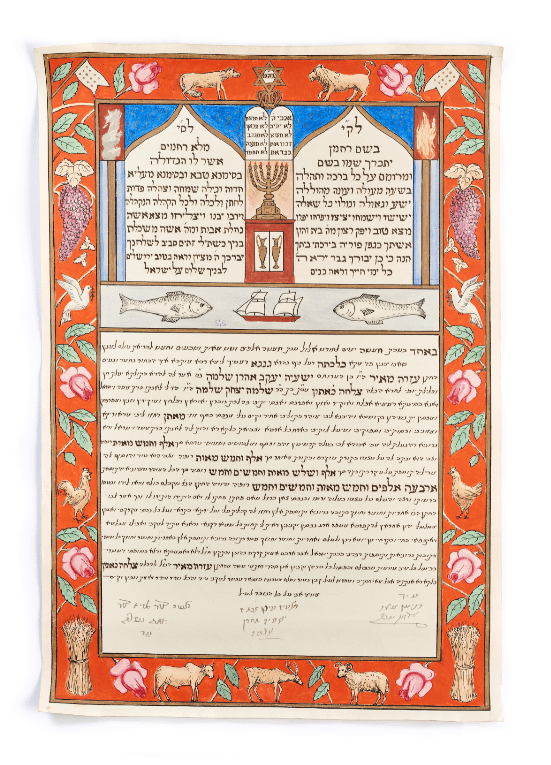Marriage Contract (Ketubah)
Calcutta, India, 1921
Pen, ink, and aquarelle on paper
Bridegroom: Reuven Sassoon son of Yechezkel Ezra Yitzchak Eliahu
Bride: Mazal Tov daughter of Shlomo Yitzchak Shlomo Binyamin
Museum Collection
Must Know
The ketubah (plural ketubot) is the standard marriage contract that Jewish law requires a groom to provide for his bride on their wedding day. It is intended to protect the woman, primarily by establishing the man’s financial obligations to her in case of divorce or widowhood. In addition to the financial clauses, the text of the ketubah outlines other obligations undertaken by the groom, including traditional conjugal rights such as food, clothing and shelter. The exact date when the ketubah became a central part of the Jewish marriage ceremony remains unknown. It is a rabbinic institution, not a biblical one, and goes back to Talmudic times (70-500 C.E.). It has been in the home of every married couple no matter what their social status and no matter what the geographical location. The rabbinic authorities considered it so basic to Jewish marriage, that a couple was prohibited from living together without one. Traditionally it must be signed by two witnesses and then read out-loud in Aramaic during the marriage ceremony. It is a public document to which the entire community is witness.
More Info
Since the ketubah is read during the marriage ceremony, and thus publicly displayed, a tradition of decorating it evolved in many Jewish communities in different parts of the world. The layout is typical of marriage contracts created for the Indian Jewish communities between the 18th and 20th centuries and consists of two distinct sections – the opening formula, or superscription, in the upper register and the contract itself beneath. The superscription is written in hebrew square characters, whereas the contract is penned in a semi-cursive hebrew script. The superscription starts with an invocation to God, followed by blessings and good wishes to the newlyweds and ends with biblical verses relating to marriage and fertility. The pair of fish in the centre symbolise fertility and the boat. The Gregorian date of the wedding is written below the boat. The embellished border is filled with birds, grapes, wheat sheaves, chickens and assorted animals.

